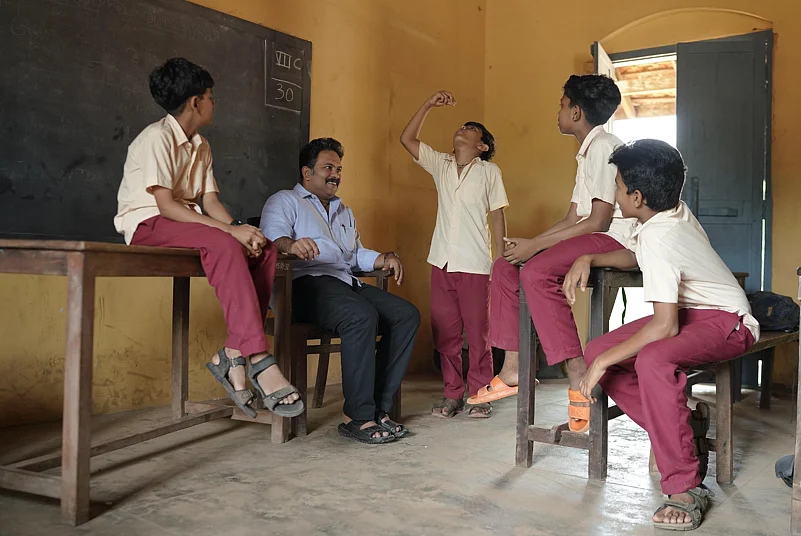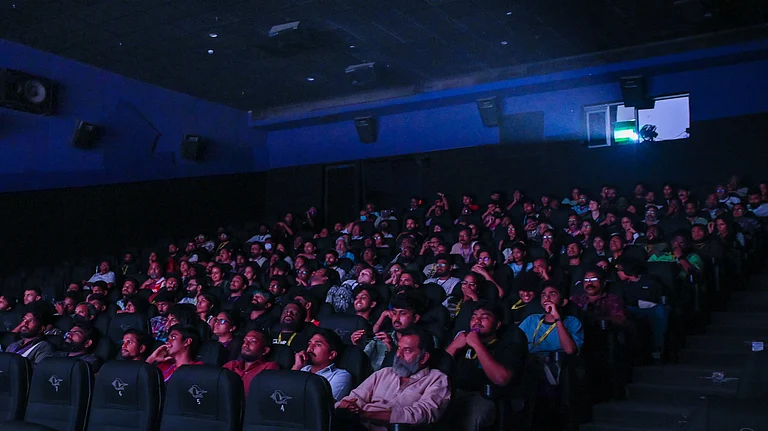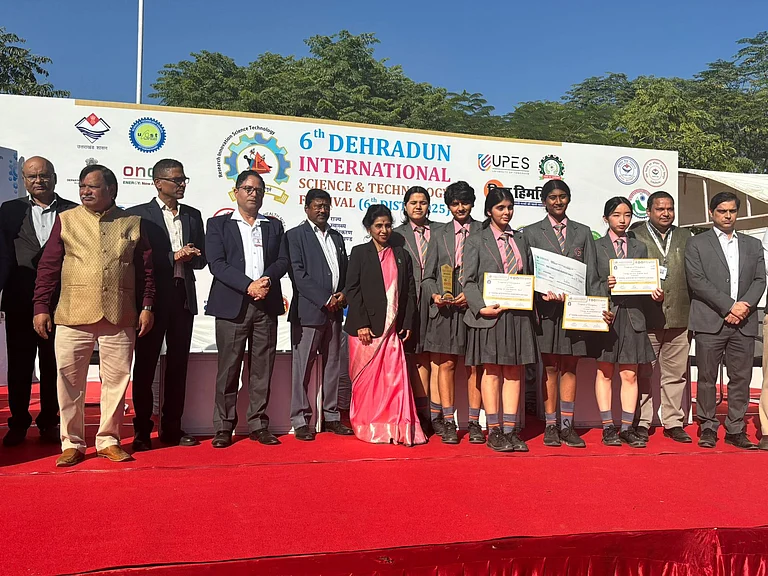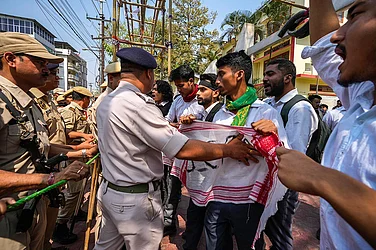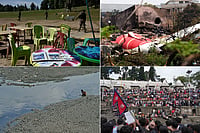
Sthanarthi Sreekuttan, a Malayalam film, has inspired schools across South India to shift from its seating practices in a bid to promote equality and engagement.
While in Kerala, individual schools have made the change quietly and Tamil Nadu issued an official directive for middle schools to implement the model.
Concerns over classroom size, subject suitability, and infrastructure are prompting calls for a blended, context-sensitive seating approach.
When the low-budget Malayalam film Sthanarthi Sreekuttan quietly premiered on the OTT platform Saina Play last month, no one expected it to change classroom design in real life. But in the weeks since, the film's understated climax—a primary school class ditched the old row-based seating for a semi-circular arrangement with the teacher at the centre—has set off a ripple effect across South India's education system.
From the deep interiors of Kerala to bustling middle schools in Tamil Nadu and experimental classrooms in Telangana, the cinematic suggestion is prompting school administrators, teachers, policymakers, and educationists to rethink how children should sit and learn.
In Kerala, General Education Minister V Sivankutty has taken serious note of the trend. In his latest Facebook post, Sivankutty said branding students as ‘backbenchers’ affects confidence and learning.
“No child should be left behind,” he wrote, adding that a panel of experts will soon be formed to study the most suitable seating model for Kerala. Interestingly, this proposal came just days after Sivankutty initiated a broader public consultation on shifting the school vacation period from the hot summer months of April and May to June and July, when the southwest monsoon would be at its peak in the state.
“Different countries follow varied models to remove seating hierarchies,” the minister noted. “Let's find one that works for us.”
In Sthanarthi Sreekuttan, the titular character — a perpetually tardy backbencher — proposes the radical idea of seating children in a semi-circle, eliminating the hierarchy embedded in traditional classroom rows.
According to K K Surendran, a retired teacher from Wayanad in Kerala, it's not a new idea; the District Primary Education Programme (DPEP) in the 1990s had already encouraged flexible seating. But it took a slice-of-life movie to rekindle the debate—and trigger action.
“I never imagined it would go this far,” says Vinesh Viswanath, the film's director and co-writer, who had once sat in a similar setup in his primary school.
“We were just trying to make a point about equality in classrooms. But now, at least six schools in Kerala have adopted the layout—and they tagged us on Instagram.”
He is also happy about the changes the film sparked in Tamil Nadu and Telangana, apart from prompting Sivankutty to explore the best seating arrangement for schoolchildren across the state.
The first school to adopt the seating change in Kerala was RVV HSS in Valakom in Kollam district, managed by actor-politician and Kerala's Transport Minister K.B. Ganesh Kumar. Without fanfare, the school implemented semi-circular seating in lower classes last year.
Only after the film hit streaming platforms did the connection come to light.
“We didn't publicise it initially because it was the film's climax,” says Vinesh, adding “However, the idea gained momentum once the movie went online.”
Other schools soon followed: Pappinisseri West LP in Kannur district, Andoor ALPS in Kannur, RCC LPS in Thrissur, GHSS Tholanur in Palakkad, and NSV VHSS Valacode in Kollam. Most of these schools share two key traits: low student strength and openness to innovation.
"We implemented it in classes one and three. The classroom feels more spacious, and children are more engaged," wrote Bindu M.V., headmistress of Pappinisseri West LP School, in a social media post welcoming the initiative of Sivankutty At Andoor ALPS.
The initiative came from a teacher who had launched a film club. After watching Sthanarthi Sreekuttan together, the students themselves were excited to try the new layout.
While Kerala's transformation is grassroots and quiet, Tamil Nadu's approach has been top-down.
On July 12, 2025, the School Education Department directed all middle schools to adopt U-shaped seating arrangements. The initiative, part of a pilot this academic year, follows similar arrangements already in place for primary schools.
"The new alignment promotes visibility, mobility, and collaborative learning," reads the official circular. "It also allows teachers to reach every student and fosters peer interaction."
However, concerns persist. Teachers' unions and parent associations worry about the possibility of overcrowded classrooms. "With over 40 students, it becomes unmanageable," says K.J. Ajayakumar, a retired teacher with Kerala Samajam Model School in Chennai.
"Still, it's a welcome experiment—we just need guidelines and support," he said.
Residential schools in Hyderabad, the capital of Telangana, where space is ample, are testing the idea. They are starting with pilot projects in select classrooms to assess the impact on student engagement and learning outcomes. If the results are positive, they plan to scale up the new seating arrangement across the school.
Teachers in Hyderabad have mixed views. Some, like social studies teacher P M Ganga, find it beneficial for discussion-based subjects but ineffective for blackboard-heavy lessons like maths and science.
"In small classes, yes. But in larger ones, it's impractical," she says.
Others call for flexibility.
"Let's not blindly follow cinematic trends," cautions Rama Sundari, a government teacher from Gundur in Andhra Pradesh.
"We need to adapt classroom layouts based on the subject and class size. The U-shaped model works for classes with a maximum of 20 students.
However, using the U-shaped model in large classrooms, where eye contact between the teacher and students is difficult, would be unscientific and detrimental," emphasised the teacher, who has 35 years of teaching experience.
"We can't make kids sit in a U-shape all day. But for storytelling, debates, or interactive lessons, it's perfect. Posture and practicality matter too," says Rama Sundari.
However, educationist J. Prasad, a former director of the Kerala State Council of Educational Research and Training, welcomes the shift.
"The semi-circle enhances eye contact, ensures proximity, and transforms a lecture into a conversation," he said in a statement.
But Prasad, too, warns that infrastructure constraints and class size need to be factored in.
Depending on the subject and session type, other experts recommend a blended model that combines row, circular, and group seating. "Rigid layouts limit learning. Seating must support pedagogy, not the other way around," says Surendran.
What began as a cinematic afterthought has snowballed into a statewide, even region-wide conversation on inclusivity and engagement in classrooms. Sthanarthi Sreekuttan may not have broken box-office records, but it has stirred hearts and rearranged desks — literally.
The challenge now is not whether to implement the semi-circular model, but how best to do it — thoughtfully, flexibly, and in a way that empowers both students and teachers.
South India's education systems may have taken a cinematic cue, but the script they write next will define how future generations learn—and where they sit.







